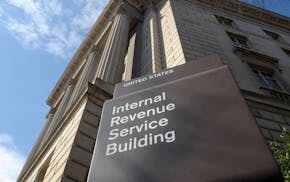Here's something democracy lovers can cheer: Absentee voting rates in Minnesota are markedly up in the run-up to Tuesday's primary election. As of 9 a.m. Thursday, more than 195,000 absentee and mail ballots had been requested, up from 103,000 at a comparable point two years ago, the Minnesota Secretary of State's office said.
That's good news, although it may not be a sign that a turnout surge will be seen when all the primary votes are cast. The reasons for the absentee voting increase have not been probed by pollsters and are therefore matters for speculation. Here's ours:
• The Trump presidency and the backlash it has engendered are boosting citizen interest in politics and primary elections throughout the country. That's been particularly evident among Democrats, the New York Times reported in June, but turnout that beat 2014 levels has also been seen in 19 Republican U.S. House primaries. That trend is bound to reach Minnesota, where voters have led the nation in presidential election turnout for decades. As Ramsey County elections manager Joe Mansky is wont to say, "Controversy is good for business."
• Voters appreciate the opportunity to settle genuine contests — and this year's ballot is loaded with them. Both major parties' gubernatorial nominations will be set by Tuesday's primary, as will major-party nominations for U.S. Senate, attorney general, three congressional districts and 21 legislative districts. A lively special election for St. Paul City Council is also on tap in vote-rich Ward Four.
Primary election turnout has been embarrassingly low in recent years, but vigorous primary contests have been scarce. The last time both major parties' gubernatorial nominations were similarly up for grabs in a primary was 1994, when turnout hit a latter-day high of 27.7 percent.
• No-excuses absentee voting, introduced in 2014, is a hit. Increasingly, Minnesotans are aware that voting need not require standing in a time-consuming line on Election Day or racing to the polls to beat their 8 p.m. closure. Neither must those who will be away on Tuesday arrange to receive and return an absentee ballot by mail.
Ballots can be cast at polling stations that have been in operation since June 29 at county elections offices and a number of municipal locations (for a list, see the Secretary of State's website). Many of those polling places will be open Saturday and Monday, though hours vary. In most places, early voters are obliged to go to either their county courthouse or a polling station in the city in which they live. But in Ramsey County, any of 11 polling places can serve any county resident. Mansky said early voting is popular among senior citizens and people for whom English is a second language and who may need extra time or an interpreter.
The appeal of early voting deserves notice by state lawmakers. They can make it easier still by eliminating the need to fill out an application — particularly for ballots cast in the week before Election Day — and by directing counties and municipalities to standardize their hours of operation.
Better still, they can allow what technology now permits: Minnesota voters should be able to obtain and cast their local ballots at any courthouse in the state. That change would be fitting for a state with an August primary and an August tradition of "Up North" vacations. Our guess is that primary turnout would climb if voters from, say, Coon Rapids or Bloomington could cast their ballots in Park Rapids, Brainerd or Bemidji.
Readers Write: Politicized education, presidential debates, election strategies, small-town papers

Taxes increasingly paying for the past — not the future
!["Since the [Hennepin Healthcare System] Board took control in 2007, CEO pay increased by more than 142%. Meanwhile, that same board sunsetted employee](https://arc.stimg.co/startribunemedia/J7MD7DSJWMP3KYIYUSCQTABOAA.jpg?h=91&w=145&fit=crop&bg=999&crop=faces)
